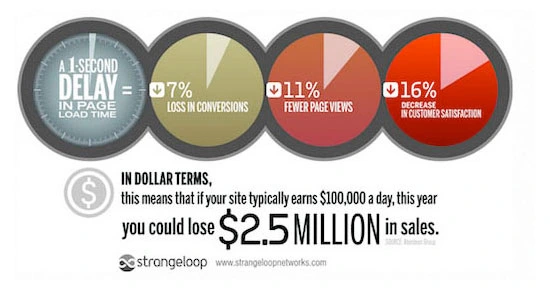As we all know, the Covid pandemic outbreak has caused a boom in the eCommerce business. This has helped businesses to keep things rolling. However, business owners have also had to face many challenges because of a major shift in their business model from physical to online stores.
This article sheds light on how the developer community can back them by smoothening this transition. The concept of ‘Performance Commerce’, which took shape from our experience of working with merchants will prove extremely useful in doing so.
Mistakes during the brick-to-click transition
According to Sanjay Gupta, Country Head and VP, Google India, the silver lining to the whole situation is that since the lockdown began, businesses have squeezed four years of change into four months from a transformation and skills perspective.
With people remaining at home, Google search increased and eCommerce sales boomed.
Merchants rushed to acclimatize to these changes by adapting to digital business. Most of them did not conduct a detailed analysis or research on what works best for them and what does not.
Many business owners and seasoned managers mistakenly see eCommerce as a set-it-and-forget-it, get-rich-quick proposition. However, this couldn’t be further from the truth.

Common mistakes while going digital
While the first step any business would take towards digital transformation is website development, just having a website platform may not be enough to drive sales.
The following are a few mistakes made by beginners:
- Faulty competitor analysis
- Lack of a well-considered online business model
- Overlooking security
- No clear value proposition
- Bootstrapping that leads to low investment in quality service
- Choosing the wrong platform
We need to ensure that the investment made towards any platform enables sales and revenue. To be successful online, the only mantra is continuously LEARN, GROW and IMPROVE, which essentially means perform better.
Website development considering Performance Commerce
Performing Website = Recurring Online Revenue.
Making it clear.

According to our customer survey, we have received 70% of support requests for performance improvement.
Keeping apart of ranking the website, or finding your brand online which is not much in our hand, we need to ensure that those who have visited our website, don’t abandon our website. There may be many reasons behind the high bounce rate which you can address and fix. For example:
- Reduce page-load speed
- Usability issues
- Website bugs
When considering investing in an eCommerce website, the top priority that needs to be considered is Performance Commerce. It’s a bucket that will cover all the elements required for a perfect eCommerce website that enables sales.
Here we have a Case Study that shows how just focusing on the aesthetic look of a website can impact your website performance.
A large fashion brand approached us to build a website. They showed us a beautiful website with a lot of animation and moving parts as a reference point. However, we knew that a website with such a complicated user interface would be a deterrent for their customers. We showed them the top websites of their industry to convince them that simplicity and clarity were better choices. They were quite convinced with our reasoning and appreciated our work.
Aesthetic look along with the performance of the Website need to be focused.
In this case, clients may not be aware of this technical aspect and we believe developers need to be competent enough to suggest what best works considering each business. We recommend understanding the client’s goal and aligning technology to their requirements is what adds value at the end of the day.
This was the origin of Performance Commerce. Ever since we started implementing this concept, we have had tremendous results. We were able to raise the conversion rate of the footwear brand ALDO and their order volume doubled from their legacy platform.
Perhaps you may lose a few billable hours. However, you would gain in terms of pride and satisfaction about a job done with sincerity. Also, the client might appreciate you enough to engage your firm for all future work or even spread the word about your integrity.
What is Performance Commerce
Performance is a task or operation perceived in terms of how successfully it is performed. So, it’s not about whether you’re performing it or not, but how successful it is.
Performance commerce keeps business success as its key focus. It involves the simple, yet relevant, idea of relooking into how you approach development.
It can be broken down into two highly impactful steps:
- Understand success
- Optimize the levers
Understand success
In general, everyone chooses eCommerce because it is a sales channel and they want more customers, more orders, and more revenue. There are many factors that lead to more customers, more orders, and more revenue like:
- Website experience
- Checkout experience
- Product display
- Brand credibility
- AI/ML capability
So, business owners need to understand what are the features that would engage their audience and developers should be able to validate how these technical implementations would impact. You should discuss success goals and clarify them at the initial stages.
Optimize the levers
A simple way to check if client requests match their business goals is to define visible and accessible levers. Depending on your client’s business, they can vary. Some common examples are load time, bounce rate, conversion rate, and time spent on site.
For example, load time is a lever common to almost all customers. So, if you’re a backend developer, you could implement caching in the best way possible. If you’re a front-end developer, you can use just the optimal amount of JavaScript. Even though such actions may seem rather simple, they have a huge impact.
If a business owner is considering Performance Commerce, they need to make sure they consider Technical experts to drive them. Business owners approach developers because they perceive the developer community as experts in technology and digital commerce. When you provide a wish list that contains everything you think will lead to success developers can review and suggest if they really need to consider or not.
“Performance Commerce is where business owners and developers work hand-in-hand with a common objective that would add value to the end-user.”
Some hacks to optimize eCommerce Performance
When people visit an online store, they wish to do what they want efficiently and effortlessly. This increases the chance of those users turning into regular customers.
However, if their visits do not go smoothly, they may abandon the site and never return. Ecommerce websites are perceived as poor performers by customers because of many reasons, such as the following:
- Lack of speed due to slow-loading third-party content or pages heavy with large images
- A poorly set-up server that lacks scalability and cannot keep up with demand for resources
- Difficulty in navigation because of cluttered and confusing design
- Poor API performance that causes errors or failures in functionalities, clickable elements, or extensions
- Checkout riddled with errors or unpleasant surprises, such as unexpected shipping costs, forced registration, etc.
We always do a holistic Audit of the client’s website to identify the patches and suggest improvements. A few things we consider to improve the website performance would be
- Product Text & Image Optimization
- Recommending PWA if they target mobile audience
- CDN Implementation
- Remove unused 3rd party plugins
- Optimize codes of the extensions (for developers)
- Minimize synchronous calls to external APIs
- Prevent loading unwanted data
Conclusion
There is no sure-fire formula to business success, whether it is conducted through a physical location or an online store. As developers, all you can guarantee is that you do your job to the best of your ability. Checkout the best practices to develop performance driven ecommerce website.
Furthermore, if you wish to make a positive impact in any project, practise client-centric thinking, help clients make better choices and train yourselves to articulate the rationale behind your advice. In short, align your actions with the business goals of your clients, which is the essence of performance commerce.










